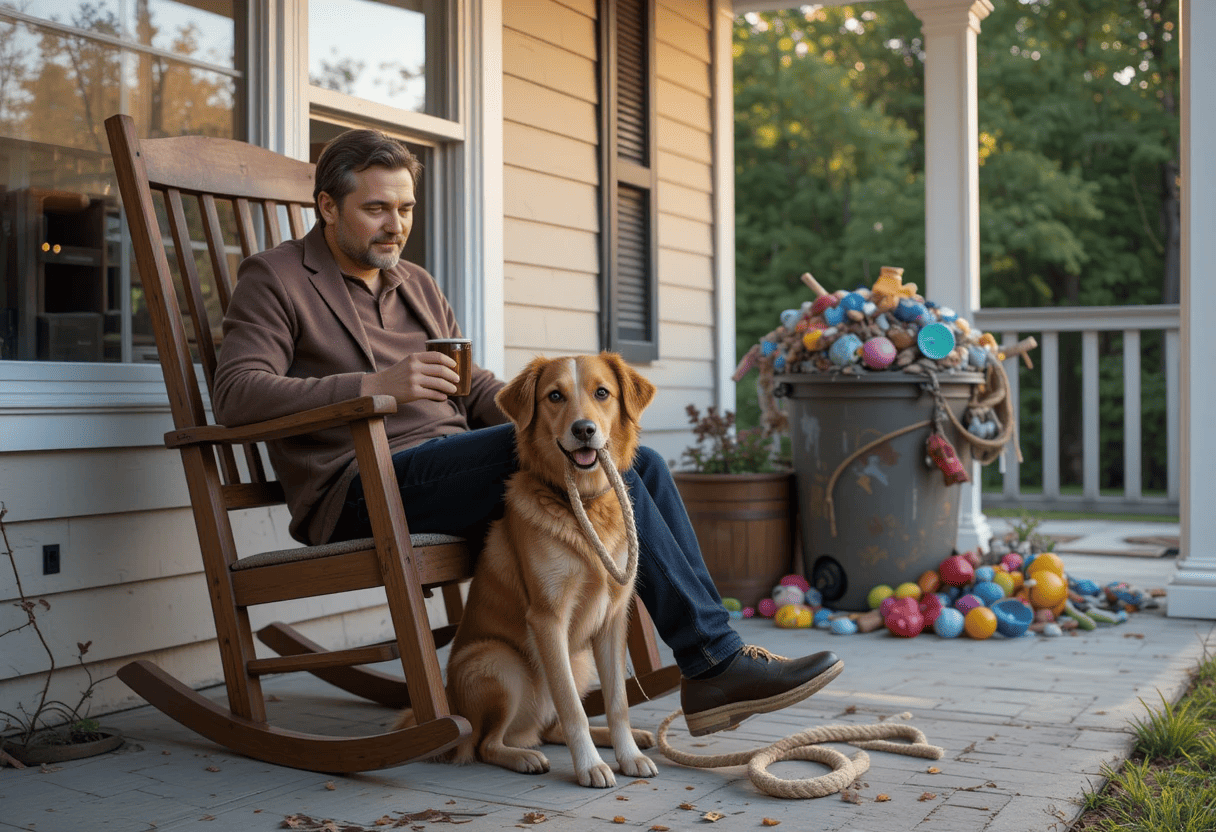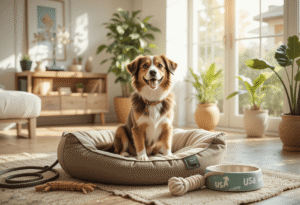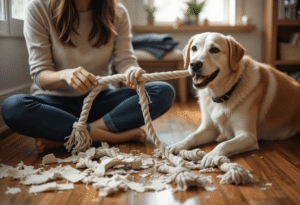
Why Choosing “Green” Gear for Your Dog Feels So Good
A few months ago, I sat on my front porch sipping coffee while watching my best friend, Emma, struggle to untangle her lab’s leash from a tangle of plastic waste bags, torn toys, and half-melted bowls. It struck me that our dogs’ “essentials” too often end up in landfills six months later. That day, I decided to swap my own pup’s gear for eco-friendly pieces—made right here in the USA—and I haven’t looked back. Not only do these items last far longer, but each purchase feels like a small high-five to the planet.
What Makes a Dog Accessory Truly Eco-Friendly?
1– Sustainable Materials
Look for items woven from organic cotton (grown without pesticides), hemp (a water-thrifty plant), or recycled plastics (post-consumer bottles repurposed into bowls). These materials reduce the reliance on virgin petroleum-based plastics and limit chemical runoff into our waterways.
2– Local Craftsmanship
When you buy USA-made, you cut down on overseas shipping emissions and support small-batch artisans who often hand-craft each piece. You can even email many of these makers directly to ask about their dye processes, fiber sources, or workshop practices.
3 –Durability and Repairability
Cheap nylon collars and plastic bowls crack or fade after a few months. By contrast, well-stitched organic-cotton collars or steel-reinforced hemp leashes can endure years of play and washings. And when a buckle or ring does eventually wear out, many small makers offer replacement parts rather than whole new pieces.

My Top Five USA-Made, Eco-Friendly Dog Essentials
Below are the accessories that survived my real-world “torture tests” (muddy hikes, chewing marathons, and five-a.m. zoomies) and earned a permanent spot in my pup Jasper’s daily routine.
Organic Cotton Collar by Willow & Paws
Why I love it: The soft cotton band never rubbed Jasper’s fur raw, and the plant-based indigo dye didn’t stain his neck blue like other collars I’d tried.
Behind the scenes: Sourced from a North Carolina farm rotating organic cotton with legumes to rebuild soil nutrients, then sewn in a solar-powered Vermont studio.
Hemp Walking Leash from TerraTreads
Why I love it: It’s lightweight yet nearly indestructible—Jasper once dragged a stick through an entire field and the leash emerged scratch-free.
Behind the scenes: California-grown hemp fibers are spun and dyed with metal-free pigments, then hand-braided by a co-op of veteran craftsmen.
Recycled Plastic Bowl by ReBowl USA
Why I love it: No more cracks in the freezer or stains from kibble fats—these bowls are molded from recycled water bottles and yogurt cups, then finished with a food-safe sealant.
Behind the scenes: A Detroit-area startup collects local post-consumer plastics, cleans and melts them, then casts them into sturdy pet bowls.
Cornstarch-Based Waste Bags by EarthRated
Why I love it: While Jasper’s “business” is never glamorous, using compostable, plant-derived bags means they break down in home compost in weeks rather than centuries.
Behind the scenes: Made in Florida from cornstarch polymers; EarthRated offsets transport emissions through local reforestation projects.
Organic Cotton Dog Bed by GreenSlumber
Why I love it: Jasper used to shred synthetic stuffing in boredom—but this hefty cotton-filled bed stays plump, even after months of kneading and napping.
Behind the scenes: Covers and cores are sewn by a family business in Tennessee, using GOTS-certified fabric and local cotton farms.

Simple Steps to Build Your Own Eco-Collection
- Audit What You Have
List every leash, collar, bowl, toy, and bed. Note which items wear out fastest or have the biggest environmental impact (like single-use plastic toys).
- Swap One at a Time
Replace the worst offender first—if your bowls crack every winter, start there. This staggered approach avoids big bills and clutter.
- Connect with Makers
Follow eco-brands on Instagram or at local farmers’ markets. Ask questions about their processes. Authentic businesses love sharing their stories.
- Repurpose and Upcycle
Turn old T-shirts into braided tug toys or denim scraps into chew-resistant ropes. When a collar’s hardware breaks, see if the maker sells replacement buckles.
DIY: Crafting a No-Waste Tug Toy
Last weekend, I grabbed three cotton kitchen towels headed for the rag bin, tore them into strips, and braided them into a sturdy play rope. Jasper flipped, shook, and tugged for an hour straight—and when the edges frayed too much, I tossed the scraps into my compost pile. Zero plastic, zero cost, and a very happy dog.
Materials:
- Three old 100% cotton towels or T-shirts
- Scissors
- A large knot at each end
Instructions:
- Cut each towel into three equal-width strips.
- Tie one end in a firm knot.
- Braid tightly, then tie the other end.
- Trim stray threads or leave them for extra chew texture.
Why Every Small Choice Adds Up
Each eco swap sends a message: you value quality, you support local jobs, and you care for your dog’s health and the planet’s future. If every dog owner replaced just one plastic toy with a recycled or organic alternative, we’d divert millions of pounds of waste from landfills each year. Imagine your next play session knowing that Jasper’s toy will biodegrade—no guilt, just wagging tails.
Bringing It All Together
Switching to eco-friendly, USA-made dog gear transformed my routine:
Less waste: Fewer trips to the trash, more compostable or recyclable items.
More conversation: Neighbors asked where I found my hemp leash; now they’re ordering too.
Real savings: Durable gear means I replace things less often—my wallet and environment both win.
Your dog doesn’t need perfection, just small steps in a greener direction. Start today—swap that cracked bowl, ask a local maker about their process, or craft a toy from household scraps. One paw print at a time, we’re building a healthier world for our furry friends and ourselves.




Add comment